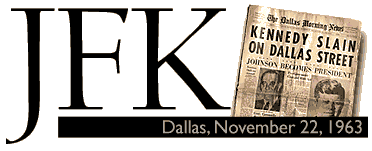
ASSASSINATION
|
22 November
1963
 ASSASSINATION |
| Deaths which
occurred on a 22 November: 1963 J. D. Tippit, Dallas Police patrolman since 28 July 1952, born on 18 September 1924, by three shots to the chest and a fourth to the head from Lee Harvey Oswald at approximately 13:15 (45 minutes after the Kennedy assassination) after Tippit stopped him for questioning, in the Oak Cliff neighborhood of Dallas. Oswald flees to a movie theater where he is arrested at about 13:55. At 19:10 he is charged with the Tippit murder. At about 01:35 the next day, Oswald would be charged with the Kennedy murder. Tippit leaves a wife and three children, aged 4, 10, and 13 [photo]. |
| 1963
John Fitzgerald Kennedy, 46, 35th US President,
shot dead in Dallas, Texas ( by Lee Harvey Oswald ??). 10 months later
would be issued the Warren Report, giving the official account of what
happened. See dedicated site http://www.jfk-assassination.de/index.html or http://mcadams.posc.mu.edu/home.htm 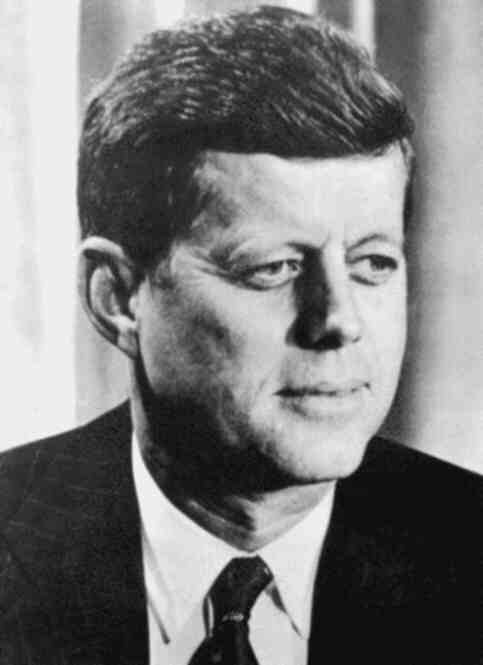 President
John F. Kennedy is shot and killed as his motorcade drives through Dealy
Plaza in Dallas, Texas. Kennedy's suspected assassin, Lee Harvey Oswald,
was believed to have used a mail-order rifle in order to shoot the president
from the sixth story window of the Texas Book Depository. Oswald was
a former Marine with a record of bizarre behavior. In 1959, he defected
to Russia after years of obsessive interest in communism. He spent three
years there before becoming disaffected and returning to the United States
in 1962. Upon his return, he became involved with several political fringe
groups and developed an intense interest in Cuba and Fidel Castro. On
22 November, several people claimed to have seen Oswald carrying a long,
brown-paper-wrapped object into the Texas Book Depository, where he was
employed. From the sixth floor window, atop cartons of books assembled
to make a sniper's perch, Oswald purportedly fired three shots, the last
of which killed Kennedy as his motorcade passed by the building. A gun
that was later located in the Depository had a palm print that matched
Oswald's. Forty-five minutes after the assassination, Oswald was seen
hurrying through the Dallas streets by police officer J.D. Tippit, who
identified him as matching the description of Kennedy's killer. When
Tippit attempted to apprehend him, Oswald shot him to death with a revolver
and fled. In the early afternoon, police converged on the Texas Theater,
where Oswald had been spotted. Inside, Oswald punched an approaching
officer and withdrew a pistol. The gun misfired and other police officers
grabbed him. "I am not resisting arrest," Oswald cried as he was dragged
out in front of an angry crowd of onlookers. "Don't hit me anymore! I
want a lawyer!" In fact, Oswald would never require the services of an
attorney because he was shot and killed by Dallas restaurant owner Jack
Ruby as he was being transferred from jail to the sheriff's office two
days later. President
John F. Kennedy is shot and killed as his motorcade drives through Dealy
Plaza in Dallas, Texas. Kennedy's suspected assassin, Lee Harvey Oswald,
was believed to have used a mail-order rifle in order to shoot the president
from the sixth story window of the Texas Book Depository. Oswald was
a former Marine with a record of bizarre behavior. In 1959, he defected
to Russia after years of obsessive interest in communism. He spent three
years there before becoming disaffected and returning to the United States
in 1962. Upon his return, he became involved with several political fringe
groups and developed an intense interest in Cuba and Fidel Castro. On
22 November, several people claimed to have seen Oswald carrying a long,
brown-paper-wrapped object into the Texas Book Depository, where he was
employed. From the sixth floor window, atop cartons of books assembled
to make a sniper's perch, Oswald purportedly fired three shots, the last
of which killed Kennedy as his motorcade passed by the building. A gun
that was later located in the Depository had a palm print that matched
Oswald's. Forty-five minutes after the assassination, Oswald was seen
hurrying through the Dallas streets by police officer J.D. Tippit, who
identified him as matching the description of Kennedy's killer. When
Tippit attempted to apprehend him, Oswald shot him to death with a revolver
and fled. In the early afternoon, police converged on the Texas Theater,
where Oswald had been spotted. Inside, Oswald punched an approaching
officer and withdrew a pistol. The gun misfired and other police officers
grabbed him. "I am not resisting arrest," Oswald cried as he was dragged
out in front of an angry crowd of onlookers. "Don't hit me anymore! I
want a lawyer!" In fact, Oswald would never require the services of an
attorney because he was shot and killed by Dallas restaurant owner Jack
Ruby as he was being transferred from jail to the sheriff's office two
days later. Kennedy and Vietnam Kennedy took office on 20 January 1961. From the start of his term, he was faced with a deteriorating situation in Southeast Asia, in which both Laos and South Vietnam were threatened by communist insurgencies. In July 1962, Kennedy's roving ambassador, W. Averell Harriman, negotiated an international agreement that arranged for a neutral coalition government in Laos. Kennedy was less successful in South Vietnam, where U.S. military advisers had been training the South Vietnamese Army since 1954. The government of South Vietnamese president Ngo Dinh Diem was threatened by a communist-dominated guerrilla movement called the National Liberation Front. In 1961, Kennedy demonstrated America's commitment to Diem's government by increasing the number of military advisers from 500 to 15'000 and ordering them into combat. By late 1963, Kennedy realized that Diem was more interested in maintaining his own power than in defeating the communists, so Kennedy did nothing to stop dissident South Vietnamese generals from planning a coup against Diem. The coup began on 01 November and was successful; Diem was killed in the process. President Kennedy himself was assassinated only three weeks later. There has been much conjecture about what Kennedy ultimately would have done about the worsening situation in Vietnam — many have asserted that he would not have escalated the war as did his successor, Lyndon B. Johnson. There were more than 16'000 advisers and other U.S. military personnel in South Vietnam when Kennedy was assassinated. Under Johnson, who said he was continuing Kennedy's policies on Southeast Asia, that number grew to over 500'000 by 1969. Kennedy and the Cold War. President John F. Kennedy's death caused intense mourning in the United States and brought Vice President Lyndon Johnson to the presidency. Kennedy's untimely death also left future generations with a great many "what if" questions concerning the subsequent history of the Cold War. In the years since Kennedy's death, a number of supporters argued that had he lived he would have done much to bring the Cold War to a close. Some have suggested that he would have sharply curtailed military spending and brought the arms race under control. The most persistent claim, which served as the centerpiece of Oliver Stone's 1991 film JFK, is that Kennedy would have withdrawn US troops from Vietnam after being re-elected in 1964. Stone went on to charge that right-wing militants in the US government coordinated the assassination plot. |
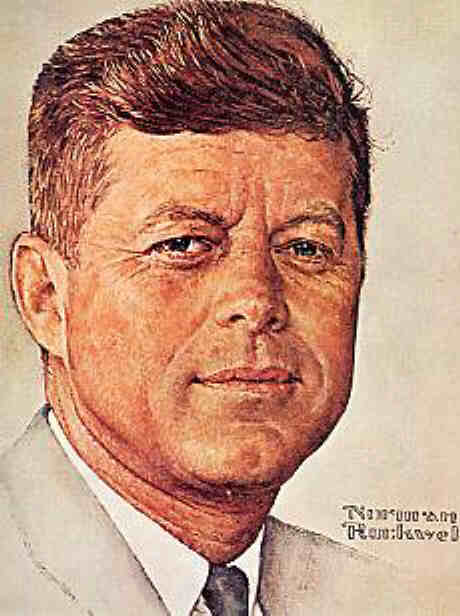 It is difficult to say what Kennedy would
have done had he not been killed in November 1963, but the arguments
raised by Stone and others do not seem supported by the available evidence.
During his brief presidency, Kennedy consistently requested higher military
spending, asking for billions in increased funding. After the humiliating
defeat at the Bay of Pigs in Cuba, his administration approved Operation
Mongoose, a CIA program that involved plots to destabilize the Communist
government in Cuba. There was even discussion about assassinating Cuban
leader Fidel Castro. In Vietnam, Kennedy increased the number of US “advisers”
from around 1500 when he took office, to more than 16'000 by the time
of his death. His administration also participated in the planning of
the coup that ultimately overthrew South Vietnamese President Ngo Dinh
Diem, who was murdered by his own military [with CIA connivance] just
three weeks prior to Kennedy's assassination. If Kennedy was going to
become less of a cold warrior after 1964, there was little to suggest
this change prior to 22 November 1963.
It is difficult to say what Kennedy would
have done had he not been killed in November 1963, but the arguments
raised by Stone and others do not seem supported by the available evidence.
During his brief presidency, Kennedy consistently requested higher military
spending, asking for billions in increased funding. After the humiliating
defeat at the Bay of Pigs in Cuba, his administration approved Operation
Mongoose, a CIA program that involved plots to destabilize the Communist
government in Cuba. There was even discussion about assassinating Cuban
leader Fidel Castro. In Vietnam, Kennedy increased the number of US “advisers”
from around 1500 when he took office, to more than 16'000 by the time
of his death. His administration also participated in the planning of
the coup that ultimately overthrew South Vietnamese President Ngo Dinh
Diem, who was murdered by his own military [with CIA connivance] just
three weeks prior to Kennedy's assassination. If Kennedy was going to
become less of a cold warrior after 1964, there was little to suggest
this change prior to 22 November 1963. Effect on the stock market News of the president's death shook the markets, as traders, fearful for the nation's future, dumped stocks left and right. In a little less than an hour, the New York Stock Exchange lost $13 billion of its total stock value. Exchange officials looked to put the brakes on the sell-off and temporarily halted the markets. But, after a few days of mourning, Wall Street seemed ready to return to action with steadier nerves and renewed vigor. On Monday 25 November the Wall Street Journal reported that business and financial leaders predicted a quick return to the strong trends the economy demonstrated just before Kennedy's assassination. This optimism was further fueled by the news that the past weekend saw a number of brokers field "heavy buy orders." Assassinat de Kennedy à Dallas Le président John Fitzgerald Kennedy est assassiné à Dallas (Texas), au cours d'un voyage officiel. Il avait 46 ans, il était beau (et coureur de jupons), il avait de jeunes enfants et une femme séduisante (d'origine française). Sa mort soulève une émotion immense dans le monde. L'assassin, Lee Harvey Oswald, est lui-même tué par un certain Ruby avant d'avoir pu communiquer ses mobiles à la police. Cette circonstance laissera planer un doute sur l'existence d'éventuels commanditaires (Mafia, CIA, Castro, le vice-président Johnson, vietnamiens vengeurs de Diem, ...?) et donnera matière à plusieurs films à sensation. Un bilan controversé Kennedy était le rejeton d'une riche et influente famille de Boston, de souche irlandaise. Il est blessé pendant la guerre puis travaille comme journaliste et reçoit le Prix Pulitzer en 1957, avant de devenir le plus jeune de tous les présidents américains et le premier de confession catholique. Il est élu de justesse grâce à l'appui de la Mafia face à son rival républicain, le vice-président Richard Nixon. Beau perdant, celui-ci n'en jure pas moins de prendre sa revanche. Ce sera chose faite en 1968 avec son élection à la présidence face à MacGovern. A la Maison Blanche, Kennedy s'acquiert une immense popularité malgré la brièveté de son mandat (moins de trois ans). Les étatsuniens lui sont reconnaissants d'avoir relancé la lutte contre la pauvreté et la ségrégation raciale ainsi que d'avoir inauguré des rapports plus équilibrés avec l'Amérique latine. Le président relève le défi spatial des Soviétiques. Il lance le programme Appolo et fait la promesse d'envoyer un Américain sur la Lune. Kennedy est également impliqué dans les pires moments de la guerre froide avec l'URSS, l'actuelle Russie. "Ich bin ein Berliner", lance-t-il aux Berlinois pendant l'érection du mur de la honte, pour manifester le soutien des Etats-Unis aux Berlinois de l'Ouest, victimes de la pression soviétique. Le 22 octobre 1962, en affichant sa fermeté dans un célèbre discours télédiffusé, il fait plier les Soviétiques qui ont installé des fusées à Cuba et menacent directement les Etats-Unis. Kennedy éprouve aussi quelques déboires. A l'instigation des services secrets américains, la CIA, il lance une expédition malheureuse dans la baie des Cochons, à Cuba, dans le dessein de renverser le gouvernement de Fidel Castro. L'opinion lui reconnaît toutefois le mérite d'assumer l'entière responsabilité de ce pitoyable échec. Et il revient à Kennedy le douteux privilège d'engager au Sud-Vietnam les premiers soldats étatsuniens. |
|
Proceeding
on Main Street, Dallas, JFK's last minutes of life
From the Warren Report: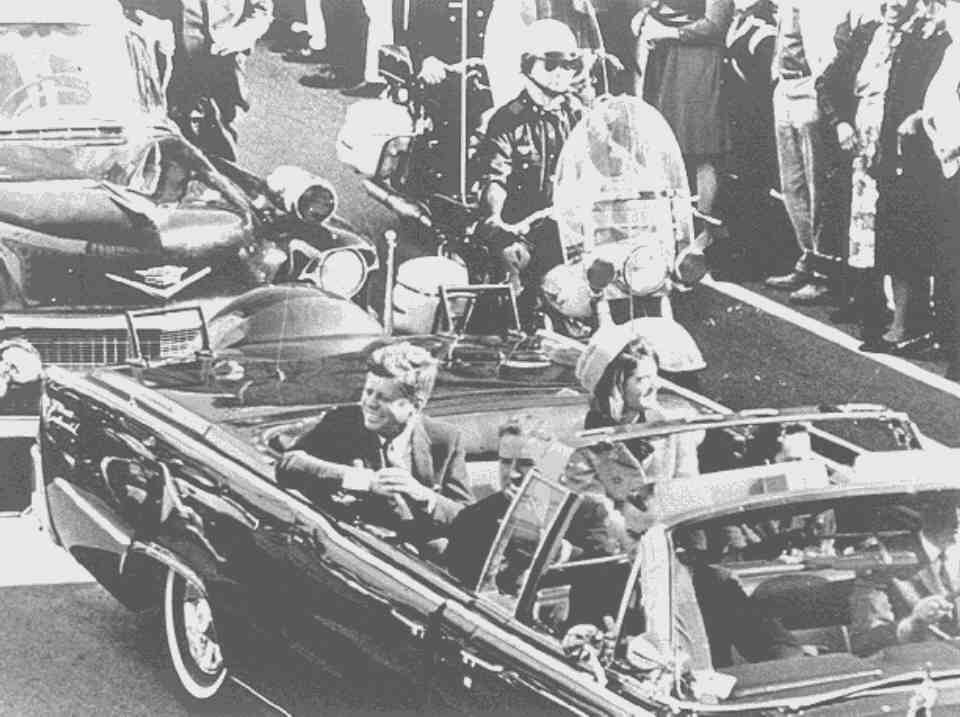
Chapter I - Summary and Conclusions THE ASSASSINATION of John Fitzgerald Kennedy on 22 November 1963, was a cruel and shocking act of violence directed against a man, a family, a nation, and against all mankind. A young and vigorous leader whose years of public and private life stretched before him was the Victim of the fourth Presidential assassination in the history of a country dedicated to the concepts of reasoned argument and peaceful political change. This Commission was created on 29 November 1963, in recognition of the right of people everywhere to full and truthful knowledge concerning these events. This report endeavors to fulfill that right and to appraise this tragedy by the light of reason and the standard of fairness. It has been prepared with a deep awareness of the Commission's responsibility to present to the American people an objective report of the facts relating to the assassination. Narrative of EventsAt 11:40 CST, on Friday 22 November 1963, President John F. Kennedy, Mrs. Kennedy, and their party arrived at Love Field, Dallas, Tex. Behind them was the first day of a Texas trip planned 5 months before by the President, Vice President Lyndon B. Johnson, and John B. Connally, Jr., Governor of Texas. After leaving the White House on Thursday morning [21 November], the President had flown initially to San Antonio where Vice President Lyndon B. Johnson joined the party and the President dedicated new research facilities at the U.S. Air Force School of Aerospace Medicine. Following a testimonial dinner in Houston for U.S. Representative Albert Thomas, the President flew to Fort Worth where he spent the night and spoke at a large breakfast gathering on Friday. Directly behind the Presidential limousine was an open "follow-up" car with eight Secret Service agents, two in the front seat, two in the rear, and two on each running board. These agents, in accordance with normal Secret Service procedures, were instructed to scan the crowds, the roofs, and windows of buildings, overpasses, and crossings for signs of trouble. Behind the "follow-up" car was the Vice Presidential car carrying the Vice President and Mrs. Johnson and Senator Ralph W. Yarborough. Next were a Vice Presidential "follow-up" car and several cars and buses for additional dignitaries, press representatives, and others. The motorcade left Love Field shortly after 11:50, and proceeded
through residential neighborhoods, stopping twice at the President's
request to greet well_wishers among the friendly crowds. Each time
the President's car halted, Secret Service agents from the "follow-up"
car moved forward to assume a protective stance near the President
and Mrs.Kennedy. As the motorcade reached Main Street, a principal
east_west artery in downtown Dallas, the welcome became tumultuous.
At the extreme west end of Main Street the motorcade turned right
on Houston Street and proceeded north for one block in order to make
a left turn on Elm Street, the most direct and convenient approach
to the Stemmons Freeway and the Trade Mart. As the President's car
approached the intersection of Houston and Elm Streets, there loomed
directly ahead on the intersection's northeast corner a seven_story,
orange brick warehouse and office building, the Texas School Book
Depository. Riding in the Vice President's car, Agent Rufus W. Youngblood
of the Secret Service noticed that the clock atop the building indicated
12:30, the scheduled arrival time at the Trade Mart. Secret Service Agent Clinton J. Hill, riding on the left running board of the "follow-up" car, heard a noise which sounded like a firecracker and saw the President suddenly lean forward and to the left. Hill jumped off the car and raced toward the President's limousine. In the front seat of the Vice Presidential car, Agent Youngblood heard an explosion and noticed unusual movements in the crowd. He vaulted into the rear seat and sat on the Vice President in order to protect him. At the same time Agent Kellerman in the front seat of the Presidential limousine turned to observe the President. Seeing that the President was struck, Kellerman instructed the driver, "Let's get out of here; we are hit." He radioed ahead to the lead car, "Get us to the hospital immediately." Agent Greer immediately accelerated the Presidential car. As it gained speed, Agent Hill managed to pull himself onto the back of the car where Mrs. Kennedy had climbed. Hill pushed her back into the rear seat and shielded the stricken President and Mrs. Kennedy as the President's car proceeded at high speed to Parkland Memorial Hospital, 4 miles [6 km] away. At Parkland, the President was immediately treated by a team of physicians
who had been alerted for the President's arrival by the Dallas Police
Department as the result of a radio message from the motorcade after
the shooting. The doctors noted irregular breathing movements and
a possible heartbeat, although they could not detect a pulse beat.
They observed the extensive wound in the President's head and a small
wound approximately one_fourth inch [6 mm] in diameter in the lower
third of his neck. In an effort to facilitate breathing, the physicians
performed a tracheotomy by enlarging the throat wound and inserting
a tube. Totally absorbed in the immediate task of trying to preserve
the President's life, the attending doctors never turned the president
over for an examination of his back. At 13:00, after all heart activity
ceased and the Last Rites were administered by a priest [Father Oscar
Huber], President Kennedy was pronounced dead. Governor Connally underwent
surgery and ultimately recovered from his serious wounds. |
Thoughts for the day: "If a free society cannot help the many who are poor, it cannot save the few who are rich.” — J.F.Kennedy "If we are strong, our strength will speak for itself. If we are weak, words will be no help." — Words which were of no help to JFK, in the draft of his planned 22 Nov 1963 speech in Dallas. PLEASE
CLICK HERE TO WRITE TO “TODAY IN HISTORY”
http://www.geocities.com/h4nov/h4nov22.html updated 011122 08:45 UT |
|
-
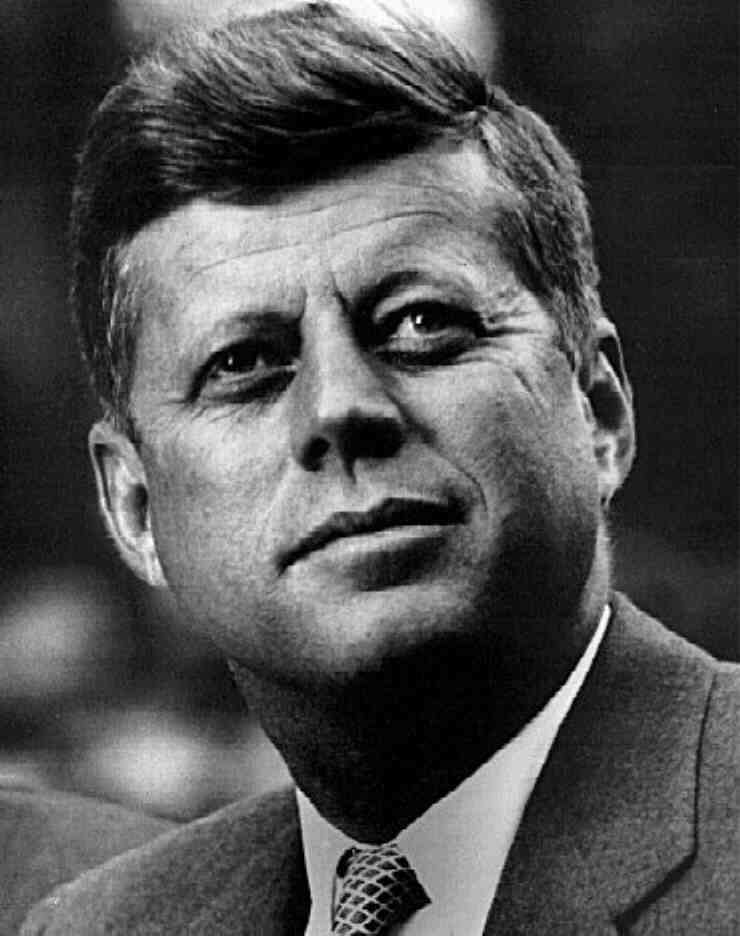 - - |